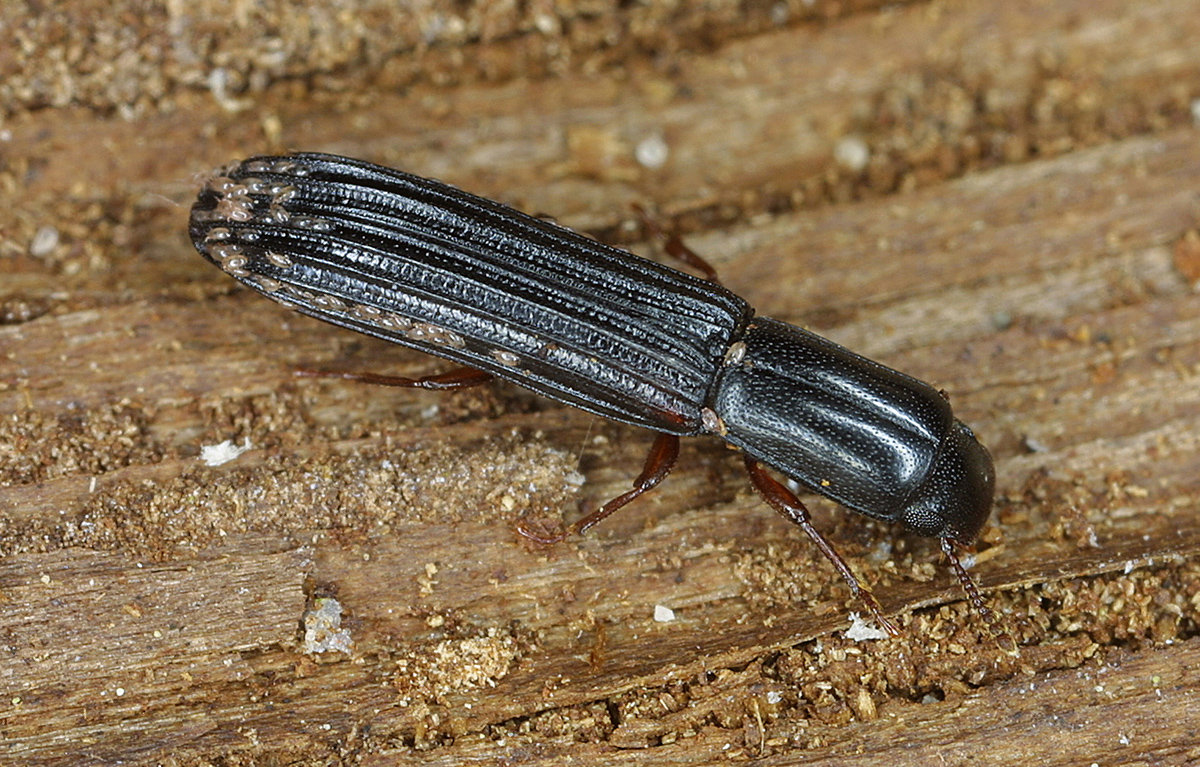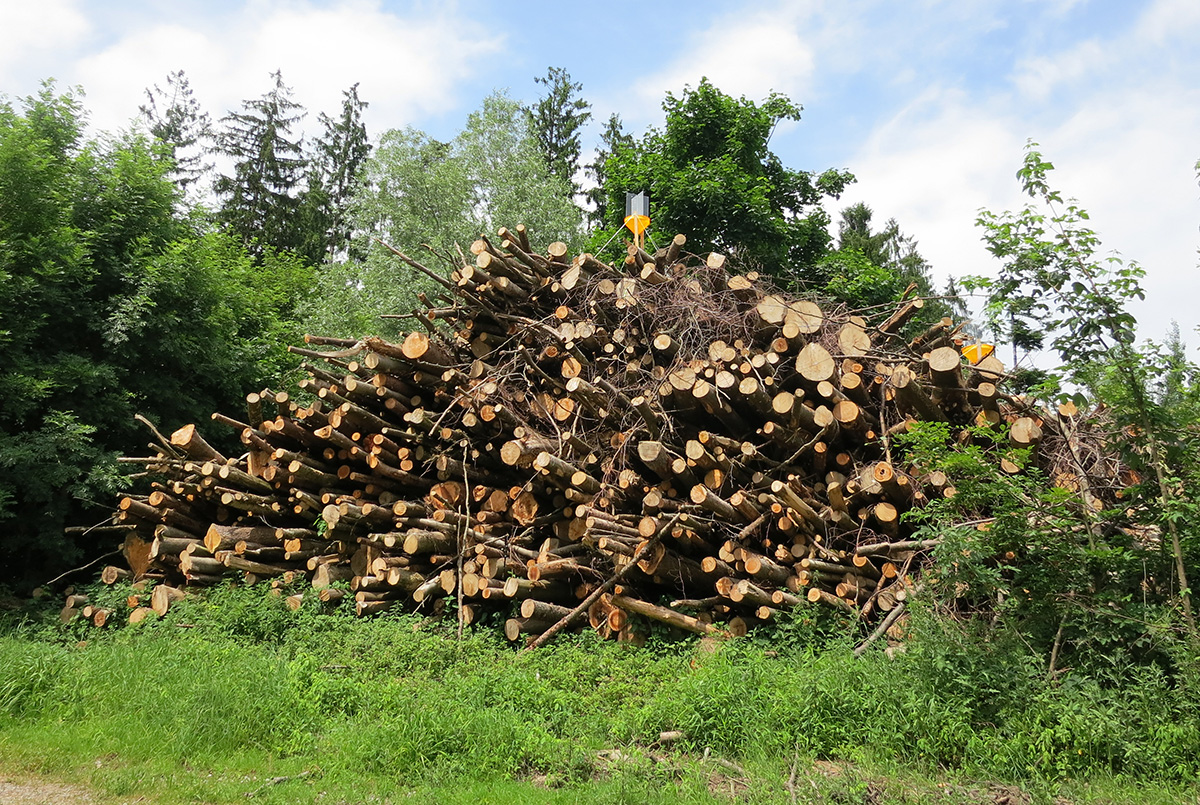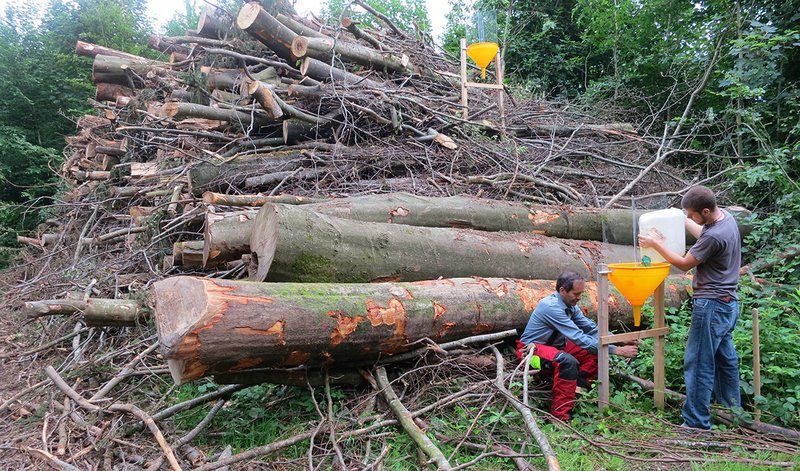When wood is burned, large quantities of CO2 are released into the air – CO2 which the trees had previously absorbed from the atmosphere while they were growing. Using wood as a heating fuel is therefore CO2-neutral aside from the emissions produced by harvesting, transporting and processing it. Energy wood is derived partially from forests (various types of poor-quality wood, timber-harvesting residues) and partially from waste timber from sawmills, waste wood and wood generated from landscape maintenance.
Winners and losers
Using energy wood more widely in forests is not only a useful tool in combatting global warming but can also help to preserve species diversity. Species requiring light and warmth benefit in both the short and medium terms from the altered living conditions after logging. This is especially important since in recent decades Switzerland’s forests have become increasingly dark and dense.
However, more intensive energy-wood management in forests can also be detrimental. The losers in this connection include, in particular, species dependent on old trees, old-growth forests or large bits of deadwood. Many of these species are currently endangered because there are often insufficient habitats for them in managed forests.

Fig. 2 - Saproxylic insects (beetles inhabiting wood) such as the endangered Colydium elongatum are dependent on deadwood. The adults and larvae of this beetle feed mainly on species which infest fresh deadwood, such as bark beetles. C. elongatum are therefore attracted to energy-wood piles where large quantities of bark-beetle larvae are to be found. Photo: Ekkehard Wachmann
Trends in deadwood volumes
Over the past few decades, volumes of deadwood throughout Switzerland have increased sharply, partly due to Hurricane Vivian in 1990 and Hurricane Lothar in 1999, and also as a result of timber harvesting no longer being profitable in difficult-to-access areas. At the same time, awareness amongst the general public and in forest-management circles of the environmental importance of deadwood has increased. While this development is certainly to be welcomed, there is nevertheless the risk that quantities of deadwood in Switzerland’s forests might decline once more in the coming decades if the growing demand for energy wood results in more intensive use of this particular energy source.
Whole-tree harvesting is likely to be the main trigger for a decline in deadwood volumes. Whole-tree harvesting involves not only stem wood being removed from forests but also tree crowns. Following this form of logging barely any wood residues remain. In addition, larger volumes of poor-quality wood will be harvested which would previously have been left in the forest such as habitat-trees with big cavities.
If the use of energy wood does increase in the future, harvesting of it is soon likely to shift to forests which have not been managed for several decades and therefore contain significant volumes of deadwood similar to that found in natural and old-growth forests. For the same reason, it would be more difficult to establish forest reserves or old-growtth patches or renew existing forest-reserve agreements once they expire.
Beetles in energy-wood storage facilities
Forest energy wood is generally harvested and processed during the autumn and winter. During the summer, energy-wood piles (Fig. 1) remain in the forest to dry. They therefore attract saproxylic beetles as they provide an ideal habitat for these beetles to lay their eggs (Fig. 2). However, the larvae of most species do not have time to fully develop before the wood is chopped up, and this could lead to significant declines in populations and even a species dying out completely in particular areas. The Swiss Federal Institute for Forest, Snow and Landscape Research (WSL) is currently studying the effect of this kind of ecological trapon saproxylic beetle fauna (Fig. 3).
Doing one thing without neglecting the other
Maintaining biodiversity and reducing CO2 emissions are both crucial to sustainable development. The key challenge lies in taking appropriate account of the needs of species which are reliant on old trees and deadwood despite increased use of forest energy wood. It is up to everyone to resolve this dilemma.
Research must be conducted to provide a solid basis for the forestry departments and those working in the field to draw up targeted. Research should be conducted, for example, into the situation of energy-wood piles, habitat trees and timber-harvesting/logging residues. The only way to achieve a balance between energy-wood use and biodiversity is for all the players involved to work together along similar lines.
Translation : TTN Translation Network



